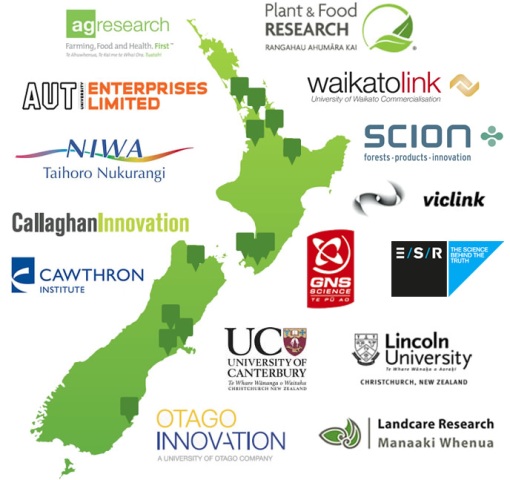Published on the 13/07/2011 | Written by Newsdesk

The launch of the Kiwinet collaboration network is promoting NZ ICT projects looking to commercialise…
The Kiwi Innovation Network (KiwiNet), a consortium of universities and Crown research institutes, has been officially launched. The network is designed to foster commercial outcomes from science and technology research in New Zealand, and will allow research organisations to work with business to increase the flow of research discoveries translated into market opportunities.
The group encompasses the large proportion of NZ’s science capability (although Auckland University is strangely absent) and includes WaikatoLink, Plant & Food Research, Otago Innovation Ltd, Lincoln University, AUT Enterprises, AgResearch, University of Canterbury, Industrial Research Ltd and Viclink. Members represent a combined research expenditure of more than $500 million.
Some of the emerging ICT-related projects from the KiwiNet Innovation Database include:
Sensor network architecture that has embedded intelligence for frequently mapping spatial conditions (Autel):
Applications:
• Monitoring and mapping the environment within a given space.
• In the horticultural and food industries, temperature is the main parameter that needs to be considered for preserving the quality of products. Thermal mapping during the chilling process and shipment of the product can be vital.
A 3D scene scanner and position and orientation system (Industrial Research Ltd):
Applications:
• Computer gaming, videos, movies and education
• Refitting and as-built scanning
• Heritage and artifacts
• Forensics and archiving
• Others e.g. rapid scans for Armed Forces.
A camera-based system for live tracking of cricket players (Lincoln University):
Applications:
• Broadcast television graphics (cricket)
• Post-match fielder analysis
Software platform for augmented reality application of iPhone and Android smartphones (University of Canterbury):
Applications:
• Segments targeted to date include outdoor AR architecture and urban visualization, promotion and advertising, military, gaming and entertainment, and outdoor museum/tourism guide applications.
Software for the transfer of architectural electronic building information to fire engineering software (University of Canterbury):
Applications:
• Fire simulation models
• Building/structural design
Evacuationz – a web-server/user interface for emergency evacuation software (University of Canterbury):
Applications:
• Fire design of buildings
Containerised data centre (Viclink):
Applications:
• Insulate data centres from physical damage from earthquakes
Vibration detection system for security applications that reduces false alarm events (Waikato):
Applications:
• Perimeter security (i.e. fences, borders)
• Building security (i.e. doors, windows)
• Physical property (i.e. statues, service infrastructure)
An automated buoy for real-time water quality monitoring (Waikato):
Applications:
• Monitoring of pollution levels in lakes, rivers, etc
• Monitoring weed build-up and fish populations
• Analysing waste discharge from industries
Surge blocking technology that protects sensitive electronic devices by isolating the power supply (Waikato):
Applications:
• Data centres
• Large businesses
• Broadcasting and communications organisations
“We live in an era where discovery is the new currency and the success with which nations can foster the climate for innovation will determine their future prosperity,´says Ruth Richardson, Chairman of KiwiNet.
“Much rests on our capacity to commercialise the ideas, schemes and dreams of our brightest and best as a small but competitive nation. Ambition to succeed in forging an innovative economy is one thing, but the acid is now on to lift our ability to execute that goal. We cannot be content with the status quo.”
“As a country we really need to get moving to create the positive economic shifts we need,” says Richardson. “One way we can do this is to get really bold about executing on an agenda of commercialisation and innovation. KiwiNet is a very practical and crucial push for smart commercialisation.”



























